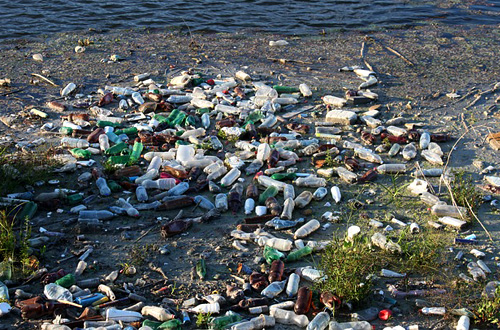Jakarta (Greeners) – Ministry of Environment and Forestry listed three big rivers in West Java as priority rivers to be qualified as Class 2 category in the 2015-2019 Mid Term National Development Planning (RPJMN).
Director of Water Pollution Control at the ministry, SPM Budi Susanti, said that the three rivers, — Ciliwung, Citarum, and Cisadane –, were chosen because they have passed limits of four pollution levels stipulated by the 2001 Government Regulation on Water Quality Management and Water Pollution.
“So, those rivers have been categorized as heavily polluted. The RPJMN targeted to increase its status to Class 2 which is not easy to do,” said Susanti to Greeners in Jakarta, on Sunday (27/12).
Furthermore, Budi Susanti said that pollution coming from domestic waste resulted of bad behaviour of people in managing their sanitation.
She cited 90 percent of Ciliwung river’s waste was coming from people living in the river banks areas where they shower, wash and defecate in the river.
“Meanwhile, domestic waste contributed 75 to 80 percent for Citarum and Cisadane rivers. In addition, there are 11 rivers running through DKI Jakarta, such as Pesanggrahan, Cipinang, and Sunter causing more pollution,” she said.
Apart from the three rivers, RPJMN also included other rivers for rehabilitation such as Brantas, Bengawan Solo, Serayu, Kapuas, Siak, Asahan, Musi, Wai Seputih, Wai Sekampung, Jeniberang, Moyo, Sadang, and Limboto Lake.
“From all of those rivers, Musi river is the only one suitable as Class 2 category. We must prevent it becoming polluted like other rivers,” she added.
Susanti said that waste volumen allocation for 15 rivers must be made available by 2017.
“Each district and city administration is advised to set up their internal policies to meet the allocation. If the allocation failed to meet its target, it will be harder to reach the target,” she said.
Meanwhile, the ministry had already determined the pollution standards and waste volume allocation for the three rivers per year to meet the 2019 target.
“To reach that target, we must reduce pollution. If rehabilitation needed, then we must also do it. Determining waste volume allocation is meant to know how much each administration must reduce in their areas. This is the responsibility of district governments whose areas are passed by the rivers in accordance to their jurisdictions,” she said.
The 2001 Government Regulation on Water Quality Management and Water Pollution categorized water standards to four classes, — Class 1 for drinking water or other similar uses, Class 2 for recreational purpose, fish farming, irrigation, and other similar uses, Class 3 for fish farming, farming, irritation and other similiar uses, and Class 4 for irritation and other similar uses –.
Reports by Danny Kosasih



















































